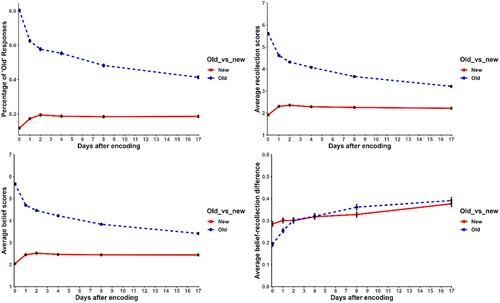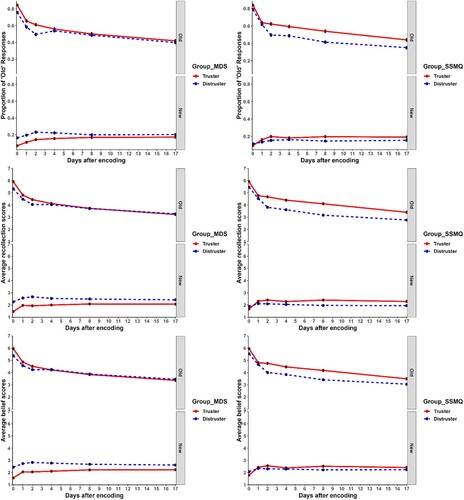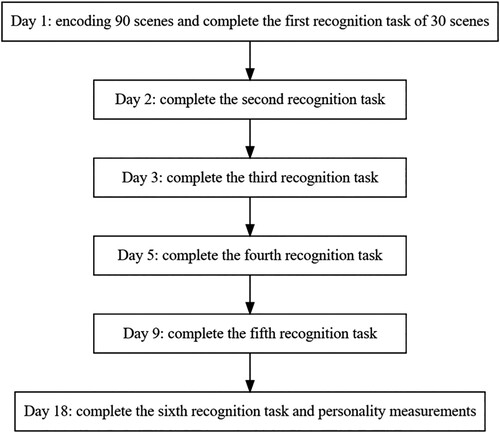Figures & data
Table 1. Order of blocks in recognition tasks.
Figure 3. Temporal changes of recognition, recollection, belief-in-occurrence, and the discrepancy between recollection and belief in occurrence.
Note. Belief-recollection difference was calculated by taking the absolute value of (belief score – recollection score). Error bars refer to the 95% CIs of the estimates, without accounting for the non-independency.

Table 2. Responses to stimuli over time.
Table 3. The effect of time on discriminability and bias.
Table 4. Difference in temporal change between recollection and belief
Table 5. The association of memory distrust with memory judgments.
Table 6. Time Moderates the Association of Memory Distrust with Recognition, Recollection, and Belief
Figure 4. Temporal changes of recognition, recollection, belief-in-occurrence among memory trusters and distrusters.
Note. The left panels were grouped based on MDS scores; the right panels were grouped based on SSMQ scores. Error bars refer to the 95% CIs of the estimates, without accounting for the non-independency.

Table 7. Memory Distrust Moderates the Belief-Recollection Association
Table A1. Analyses on Stimuli Valence and Arousal Ratings
Table A2. Descriptive statistics of memory performance.
Table A3. The association of memory distrust with discriminability and bias.
Supplemental Material
Download MS Word (22.4 KB)Data availability statement
All data and analyses scripts are at https://osf.io/g7xwn/.


